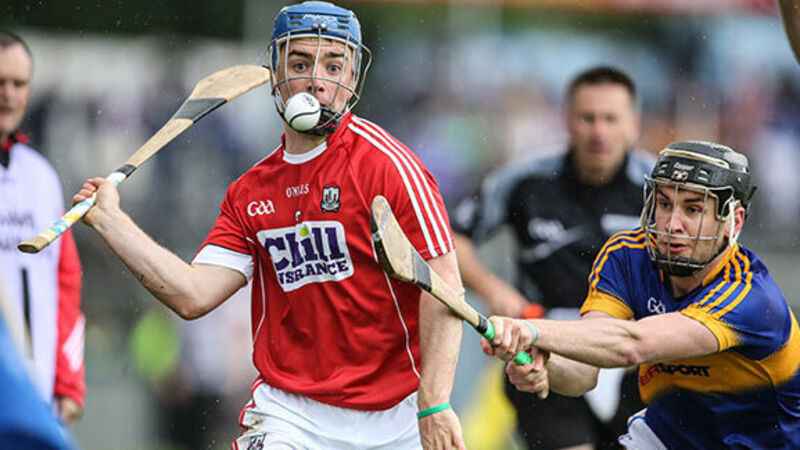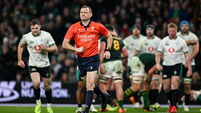Cork lost because of fundamental failures

Cork took the field almost 40 minutes before throw in. All the pre-game activities are timed to get the optimum start but 40 minutes seems excessive to me. From the off, the team lacked the high workrate, intensity and crisp tackling of the Kilkenny game - basic requirements in the championship.
The defining moment arrived almost halfway through the second-half. Cork got a 22 - as we can hardly call them 20m frees any more. Patrick Horgan elected to go for a goal. Tipp led by seven but they hadn’t scored for 15 minutes. The Cork supporters sensed a revival and any score would have kept it going.
Horgan’s attempt was struck at a good height for defenders and was blocked. However, all was not lost for the Rebels. Tipp failed to clear, Cork recycled the ball from the left wing setting up William Egan, 40m out, straight in front of the goal in a great position to salvage a point. This would have cut the deficit to six and maybe create doubts in Tipperary minds.
I have mentioned Jeff Reinebold, Sky’s NFL analyst on more than one occasion. When it comes down to the business end of the season, he regularly speaks about the “fundamentals”. The basic requirement in hurling, even at underage, is that you take a step or two when you gain possession. It is far more difficult to tackle a moving target.
Egan remained static, threw up the sliotar and was dispossessed by Tipp’s Noel McGrath who was funnelling back quickly. If Egan had moved, McGrath would have missed the tackle.
A Cork score at that point might have breathed some extra oxygen into the players’ lungs. In the stand, I sensed the air escaping from the red balloon. This play signalled the end for Cork.
Minutes later, a 65 was needlessly given away by Killian Burke when a flick back to goalkeeper Nash was the better option. Simple fundamentals. Tipp regained the momentum, another favourite topic of Mr Reinebold, when O’Dwyer knocked over the opportunity.
There has been much post match talk since the game of Cork’s sweeper system. It was more like William Egan being detailed as a double marker on Seamus Callanan rather than a conventional sweeper. Franz Becken bauer of Bayern Munich and West Ger many was the quintessential sweeper. .
Conor O’Sullivan may have been a better bet than William Egan to fulfil this role. O’Sullivan struggles as a man marker but he reads the play well.
Egan more or less stood in front of Anthony Nash, where he wasn’t really needed, as the keeper could have dealt with any deliveries into this area. Egan’s positioning made it easy for Tipp to take him out of the play.
However, with good fundamentals in defence, these crosses can be cut out. Egan needed to alter his position to intercept these cross balls by occupying the immediate space either in front or behind of Callanan. Damien Cahalane, detailed to man-mark the Tipp danger man, would merely have had to prevent him from getting primary possession, a far easier job with an extra defender present to pick up the breaks.
Playing an extra defender is not just about defence. Much has been made of the failure of the Cork attack to gain possession. A lot of the responsibility for this rests with the defence and midfield who struck countless deliveries straight to the welcoming arms of Padraig and Ronan Maher in the Tipp half back line. Brian Lawton was dropping into midfield and was being by passed leaving the two Maher brothers free in the half backline. This is a disaster in the modern game and they had the time to pick out forward colleagues regularly.
The clear lines that defined attack, midfield and defence in the last century are no more. One is now an attacker when you have possession and a defender when the ball is turned over. When you position an extra body in defence that player must also be capable of organising the movement of the ball transference from the backline to the forwards. Correct angles of passing and running are crucial to the success of this strategy and, like the short puckout, need constant practice.
It was clear on 17 minutes Cork’s defensive system wasn’t working when Tipp led by six points. The Cork management had a chance to change it then. They didn’t. They may have thought they were turning the corner when they scored two points. However just before the half hour mark the gap was back to six and I was surprised the Cork management didn’t go to plan B, a traditional 15 v 15, flooding midfield/half forward by dropping players back to stem the blood flow before the critical half-time break.
I was also surprised they dispensed with Pa Cronin, Stephen Moylan and Shane O’Neill and the timing of it as it must have affected morale in the camp. (In the interests of accuracy, I think it’s important to note Paudie O’Sullivan opted out himself) Could a fitter Shane O’Neill not have played the extra defender role well last Sunday? Could Moylan have provided impetus off the bench or could Pa Cronin have been effective on the fringe of the Tipp square or centre-forward in the last quarter?
What of Tipp? It is hard to judge them on Sunday’s display. They look good going forward but, as the previously mentioned Jeff Reinebold might ask: “Have they got a Super Bowl defence”?











